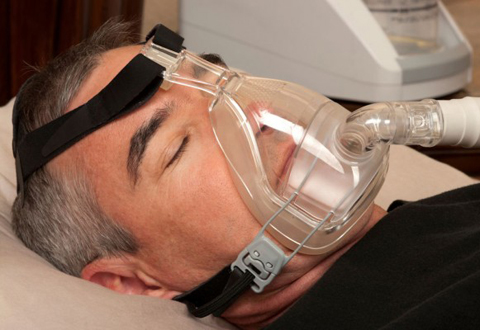Center for Health Equity Research and Promotion
CHERP Research and Accomplishments

Researchers determined that home-based testing costs were $564 lower, compared with lab-based testing.
VA Study Shows Value of Home-Based Sleep Apnea Testing
Home-based testing for obstructive sleep apnea (OSA) was shown to be clinically effective and cost less than laboratory-based testing in a VA-funded study, “Cost Effective Strategy to Evaluate Veterans with Sleep Apnea,” led by Center for Health Equity Research and Promotion (CHERP) investigators Samuel Kuna, MD at the Philadelphia VA Medical Center (PVAMC) and Charles W. Atwood, MD at the VA Pittsburgh Healthcare System (VAPHS).
The purpose of this study was to address barriers to care of Veterans with suspected obstructive sleep apnea by comparing the impact of home versus in-lab testing on patient compliance, function, cost, and cost-effectiveness.
"The evidence supports the use of home sleep apnea testing, followed by initiation of continuous positive airway pressure (CPAP) in the home setting as opposed to the laboratory setting, for people with routine OSA," said Dr. Atwood, who is Director of the Sleep Disorders Program for the VAPHS. Dr. Kuna is Chief of the Sleep Medicine Section at PVAMC.
"If you do the home testing approach, that also saves you money right off the bat, compared with laboratory testing," said Dr. Atwood. He recently presented the study results at the international conference of the American Thoracic Society in San Diego.
The investigators enrolled 296 patients from the two VA sites who were randomized to standard in-laboratory polysomnography testing (lab group) or unattended home testing (home group). Patients in the home group underwent overnight recording with a portable monitor followed by at least three nights of using a positive airway pressure apparatus.
They also obtained data from case report forms, staff logs, and VA records, and categorized the costs as sleep-related, pharmaceutical, lab, hospital, or "other." Next, they estimated costs per category using repeated measure generalized linear models reported in 2010 dollars and discounted at 3% per year.
The majority of study participants (95%) were male. Of the 296 patients, 223 (110 in the lab group and 113 in the home group) were initiated on continuous positive airway pressure (CPAP). Patients in the lab group were slightly younger, compared with their counterparts in the home group (an average of 52 vs. 55 years, respectively; P = .02), but no other baseline characteristics were significantly different between the groups.
After an average follow-up of 2.75 years, the researchers determined that home-based testing costs were $564 lower, compared with lab-based testing (an average per-patient cost of $4,057 vs. $4,621, respectively; P = .007). Differences in the other four categories of cost did not reach statistical significance, with P values ranging between .19 and .82. Results of the Functional Outcomes of Sleep Questionnaire, a disease specific quality of life questionnaire, revealed no statistical difference between the two groups.



















